
In 2010, Cambodian artist Morn Chear lost both of his arms due to an electrical accident. He was just 20 at the time and, being newly disabled, had to learn to live with his new body. After a period of depression and despair, Chear turned towards art as his therapy. He found love, acceptance and perseverance through block printing, and now works as a full-time studio artist at Open Studio Cambodia. Here, Ayla Angelos speak to Chear about his empowering journey.
In one of Morn Chear’s first prints, a butterfly floats above rippling water. The wings are bold and detailed, etched in a fierce shade of red as they lift the subject’s body into the rain. The piece is titled Metamorphosis, and it’s inspired by the transformation of a creature – whether a butterfly or a person – as it hatches from its cocoon.
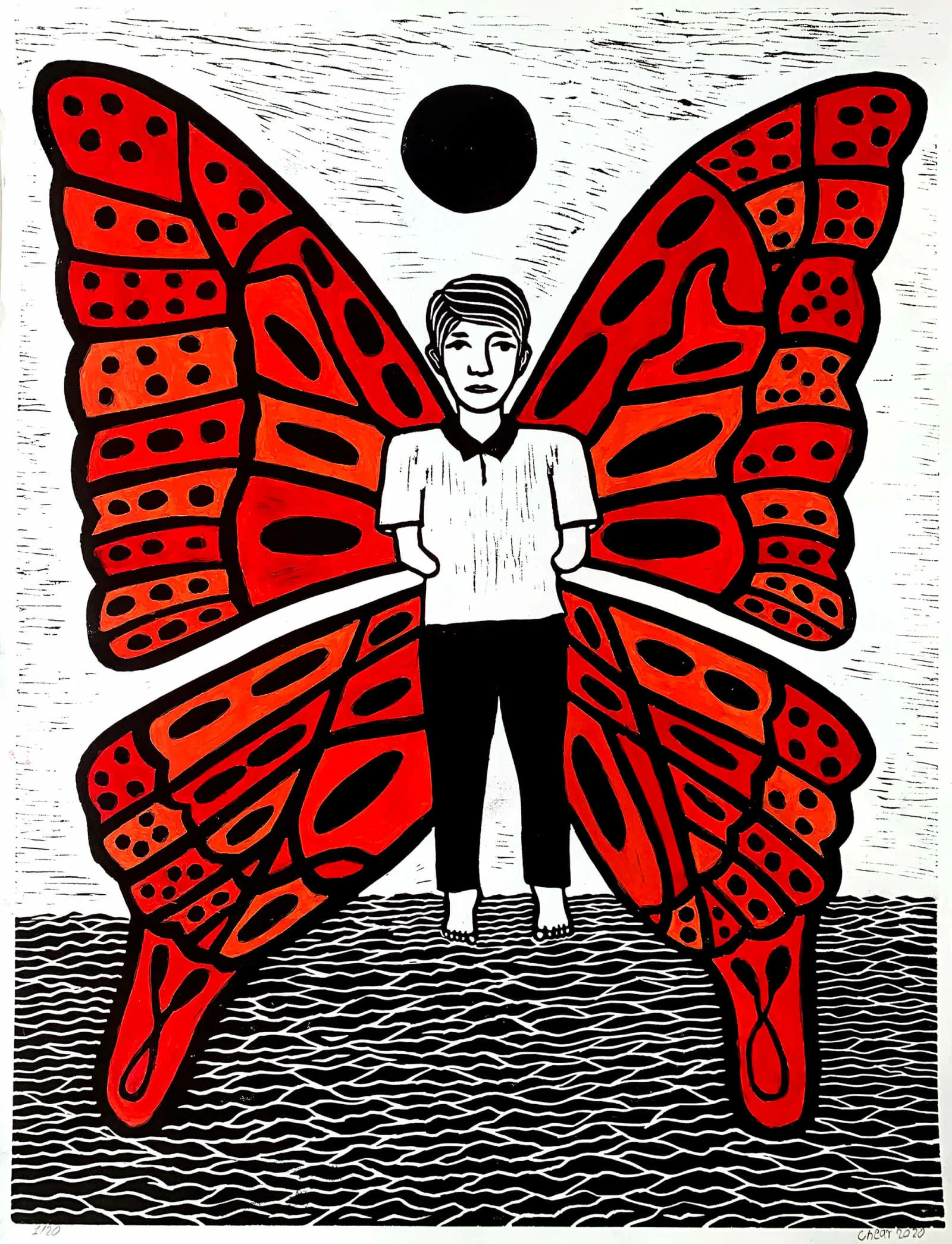
Chear, a Cambodian block print artist born in the Kampot Province, went through such a process of metamorphosis himself. In 2010, while working on a construction site to support his family, he was electrocuted and was forced to have both of his arms amputated.
Being newly disabled, Chear experienced the plight of people treating him differently. “There was a younger kid in my village who made fun of me a lot,” he recalls. “He looked at my body and told me I would never be able to find a job other than being a beggar on the street.”
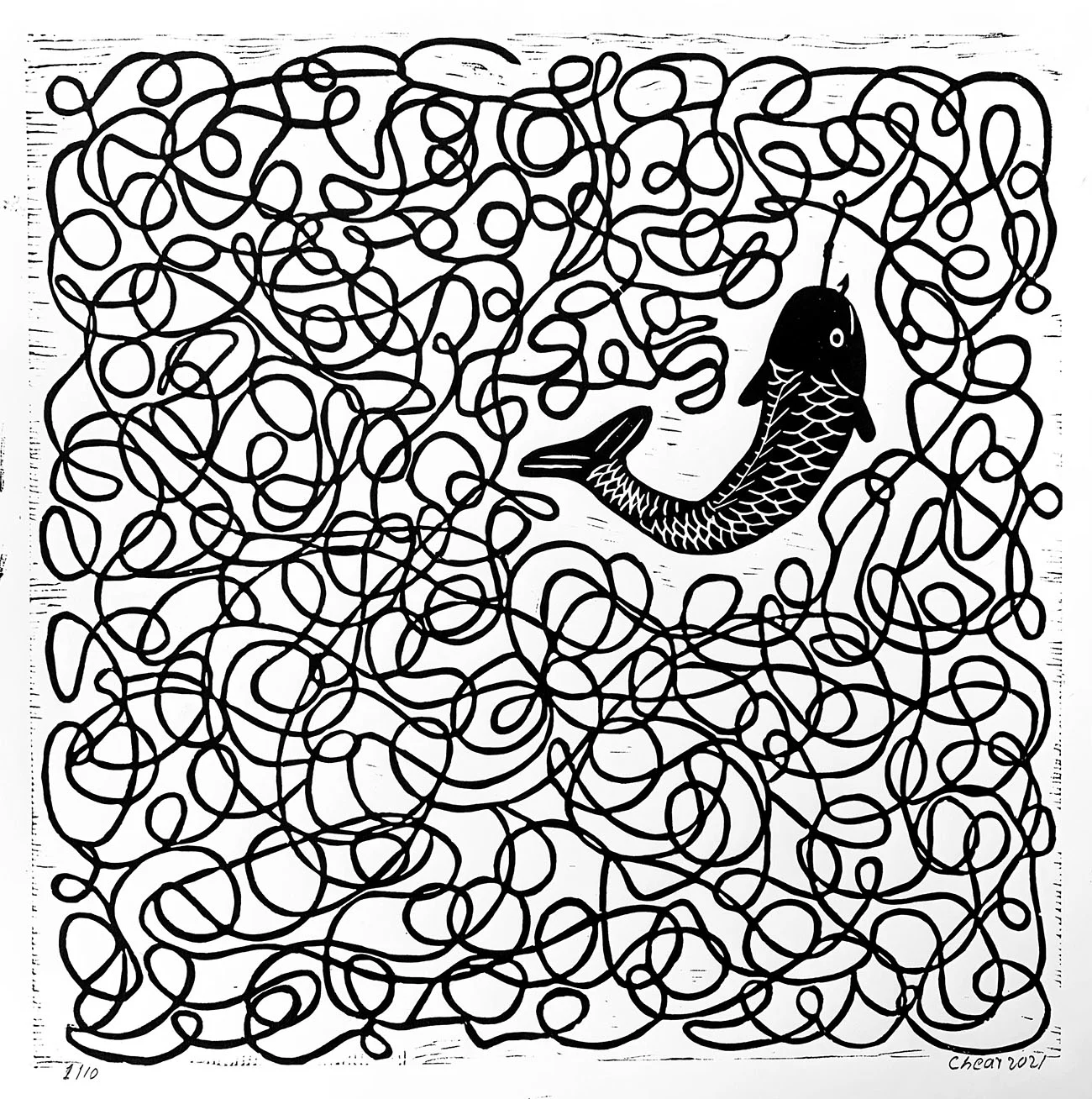

Chear wound up in a trench of deep depression. “After I became disabled, it was so difficult that I didn’t want to carry on living,” he says. “Sometimes, I wanted to kill myself, but then I saw my brothers, sister, mother and father, and they helped lift my spirits and gave me the strength to persevere.” With the support of his family, Chear landed a job herding ducks and, in 2015, he was introduced to Epic Arts – a non-profit, inclusive arts organisation that brings people with and without disabilities together. It was here that Chear learned a host of useful and empowering skills – such as singing, art, music, dancing and English – and he was offered a permanent role as a contemporary dancer.
After seven years, his role ended due to a problem with his health. But as one door closed, another opened, and in 2019 Chear joined Open Studio Cambodia as a full-time studio artist. Everything began to fall into place, and soon enough Chear had built a portfolio filled with wonderfully monochromatic prints, each peppered with storytelling and a new-found adoration for the craft.
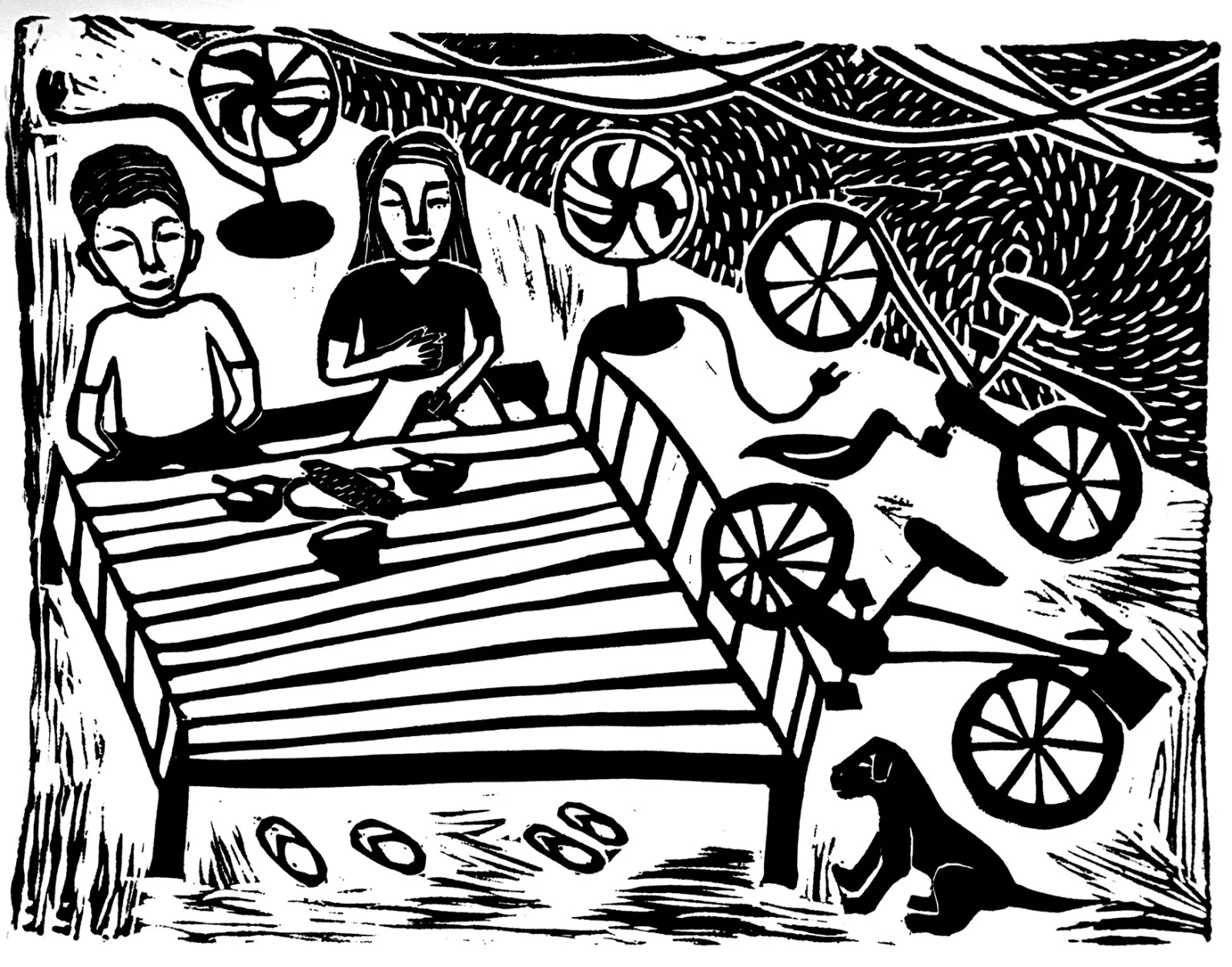

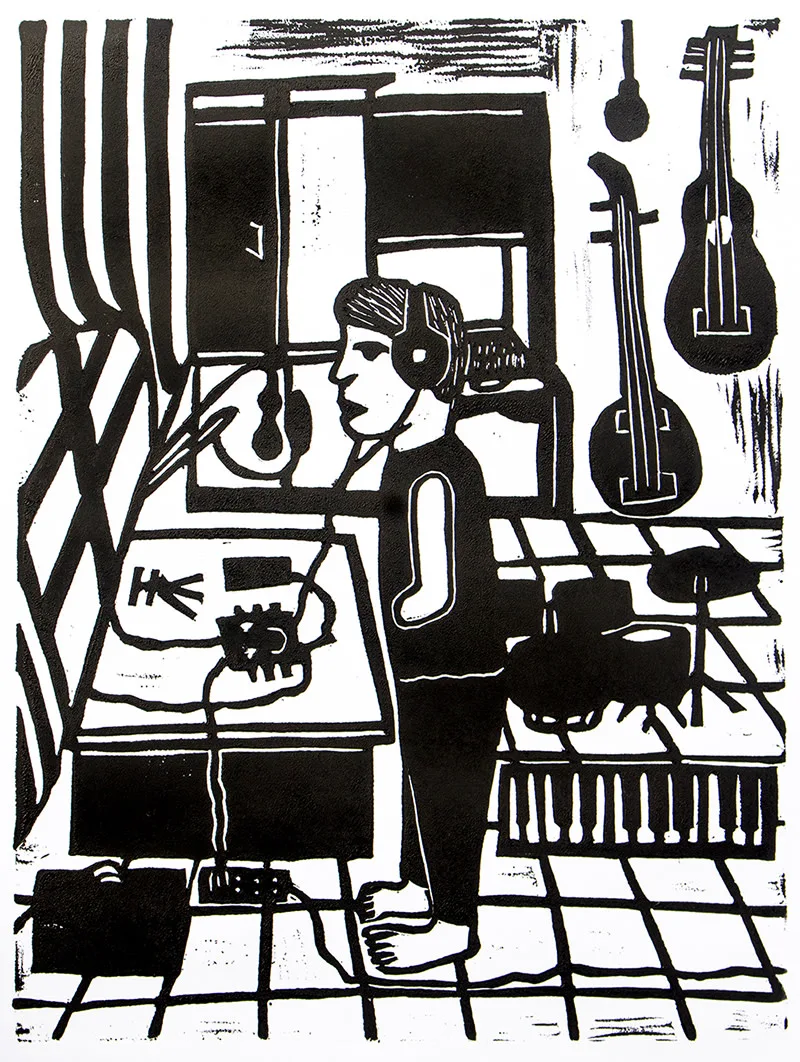
Even though I have difficulties in my life I keep moving forward, persevering like a butterfly in a storm.
On a typical day, Chear is surrounded by like-minded artists in the studio. However, with the doors temporarily closed due to Covid-19, he’s had to switch the studio setting for his room in the north-eastern town of Siem Reap. Despite the change, his process is still very much the same and begins with jotting his thoughts onto paper.
“When I’m happy with my drawing,” he says, “I’ll take it to Lauren Lida (mentor and director of Open Studio Cambodia) and ask for feedback. When we agree that it’s ready, I transfer the drawing onto a linoleum block with a pencil, and then use a chisel to carve away parts until my picture is clear.” Next, Chear will employ ink and paper to print on the block, adapting to the process by using his arms and mouth. But he can’t do all of it himself, so his wife will help out with some of the cutting and printing.

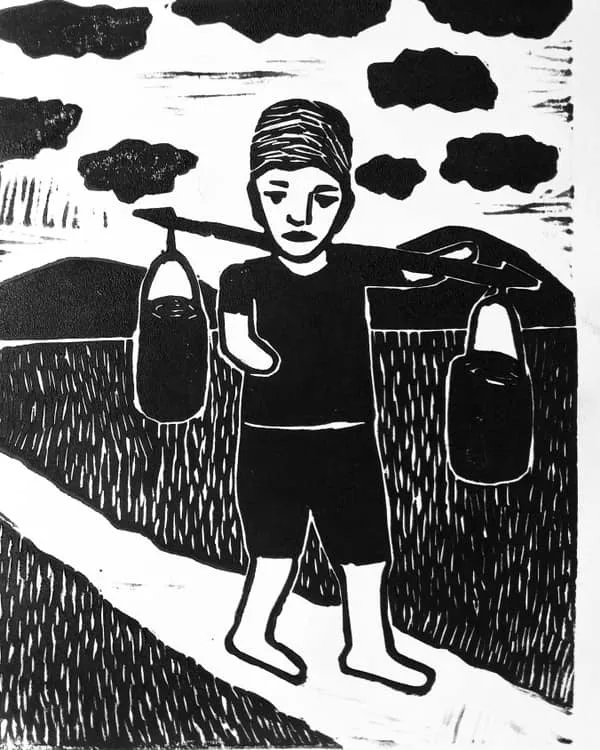
As for Chear’s subjects, they’re real-life scenes of cows, water buffalo, people, ducks, chickens, dogs and more, inspired by his past and by everyday life in Cambodia. For instance, the two pieces named Sometimes Happy, Sometimes Difficult and Starting Work Again both refer to the tasks he needed to re-learn after becoming disabled, like carrying water from the well, herding ducks, riding a bike, fishing and doing housework.
Then there’s Metamorphosis which, as mentioned above, is his earliest example and perhaps his most prominent. A picture themed on himself and his disability, Chear refers to this piece as being a direct depiction of the moment he grew wings – the feeling of lightness, acceptance and evolution since his accident. “Even though I have difficulties in my life,” he adds, “I keep moving forward, always trying again and persevering like a butterfly flying through a storm.”

Chear’s journey is inspirational. With plans to exhibit his prints internationally and to open up his own studio in the future, he’s fully adapted to living with his disability – and art has played a huge role in that. “I’m delighted that I began a life in art,” he says. “I think art gives me new inspiration, and shows me things I hadn’t known or experienced before.”
In the US, the National Suicide Prevention Lifeline is at 800-273-8255. You can also text HOME to 741741 to connect with a crisis text line counselor. In the UK and Ireland, Samaritans can be contacted on 116 123. In Australia, the crisis support service Lifeline is 13 11 14. Other international helplines can be found at www.befrienders.org